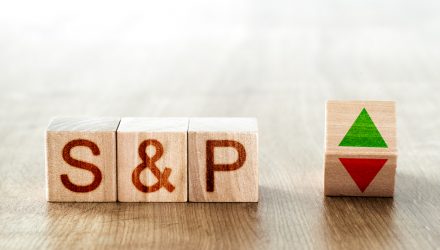It’s no secret that communications firm stocks have been a tough place to be during a complicated 2022. Having helped to lift the markets out of the heights of the ongoing pandemic, communications firms have since dragged the index away from the strong energy sector. Investors may want to consider what this means for the broader S&P 500 and the sector spread ETFs that may be appropriate for such a gap.
With the SPDJI spread at 24% as of Thursday for October alone, the spread between the top S&P 500 sector, energy, and communications at the bottom is higher than any other calendar year. Safely navigating the split will be key, according to VettaFi head of research Todd Rosenbluth.
“One lesson from this is to not take on significant sector over- or underweights since there’s a risk of getting the call wrong, not just right,” Rosenbluth said. “While the spread between the top and bottom performers is wider than normal in 2022, there’s no guarantee that things will return to normal in 2023.”
Investors can consider both ETFs that touch each sector as well as those that offer lower-volatility exposure to the whole S&P 500. Those watching for the energy sector to come back down to Earth can track the Direxion Daily Energy Bear 2X Shares ETF (ERY), which looks to provide 2x leveraged returns on a daily basis for energy bears.
ERY follows the S&P 500-derived Energy Select Sector Index, charging a 99 basis point fee and bringing $4.8 million in net inflows over the last five days. ERY is also paired with its opposite, which benefits from energy stock success, the Direxion Daily Energy Bull 2X Shares ETF (ERX).
Those looking out for a bounce-back opportunity for communications firms should follow the Communication Services Select Sector SPDR ETF (XLC), which tracks the S&P Communication Services Select Sector Index and charges 10 basis points. With $435 million in net inflows for the last month, XLC may be primed to benefit from a rebound.
Traders wanting a safer way in to some of the firms in both sectors should also follow the Invesco S&P 500® Low Volatility ETF (SPLV), which tracks the S&P 500 Low Volatility Index, which includes the 100 securities in the S&P 500 with the lowest price fluctuation volatility. SPLV charges 25 basis points and has seen $1.1 billion in net inflows over the last month.
If appropriately used, sector spread ETFs can help investors ride a historical gap between energy and communications heading into an uncertain 2023.
For more news, information, and strategy, visit VettaFi.
